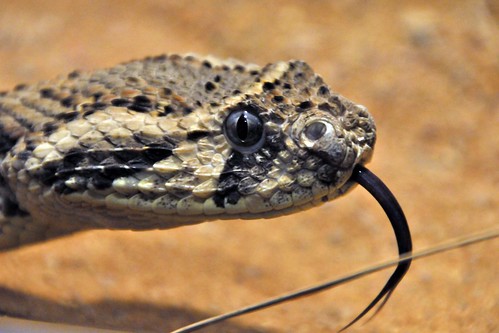 |
| African Puff Adder (Bitis arietans) |
The results were certainly interesting. Not only are the African Puff Adders utilizing two distinct luring methods, both independently and simultaneously, but they are adjusting their luring methods for the type of prey they're trying to lure in. With the lingual luring specifically, this type of luring had not only been previously observed only in aquatic foragers, but B. arietans was found to only use lingual luring for amphibian prey such as frogs and toads, indicating that they're changing their behavior in response to what prey they have available. This more complex form of decision making could certainly be a source of future research in the field of serpent behavior.
Source:
| Glaudas, X., & Alexander, G. J. (2017). A lure at both ends: aggressive visual mimicry signals and prey-specific luring behaviour in an ambush-foraging snake. Behavioral Ecology and Sociobiology, 71(1), 2. |

1 comment:
Cool article. Did you watch any of the supplemental videos? Poor (dumb) toads!
Post a Comment